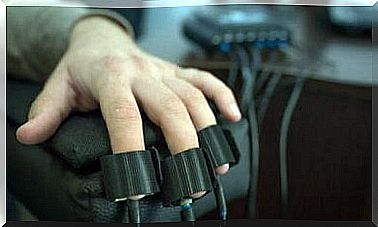The Emotional Curve And What Happens At The Top

Many experts define an emotion as a subjective state that has an overwhelming or intense affective load. Although it is difficult to describe emotions accurately, everyone can describe these subjective states in a clear way. For example, you could describe a situation where you felt angry or happy. A good deal of these emotions, from sadness to fear, develop in a similar way: through the emotional curve.
What are emotions for?
According to researchers such as Martinez-Sanchez (2011), suppressing or not expressing significant emotional events (crying over the loss of a loved one, expressing love, etc.) can lead to a noticeable physiological hyperactivation, immune depression and other negative effects on your physical and mental health in the short and long term.
When that is the case, why are emotions and expressing them so important? These same authors point out the existence of intrapersonal functions, related to homeostasis, survival and very personal functions, which are more social.

Intrapersonal factors
- Emotions help coordinate the various cognitive, physiological, and behavioral response systems.
- They activate behaviors that can be inhibited when the emotions are not there. For example, someone who is not very athletic can run quite fast when they are scared, or a self-defined pacifist can defend someone who is in trouble when they feel angry or furious.
- Emotions prepare the body to fight or run away. They play an extremely important role when it comes to survival. Feeling scared is just a foretaste of fighting or running away in response to what you interpret as a threat. Without the fear marker, the body would not be prepared to face danger or escape.
For example, the HPA axis is activated when your body sounds the alarm in response to a dangerous stimulus (when you feel fear). This then activates the adrenal glands which release glucocorticoids. Your body releases adrenaline and endogenous opioids to alleviate physical pain as if you were being attacked. At the same time, systems that are not necessary to escape are suppressed, such as the digestive system.
When you are in danger , your heart rate increases, your spleen contracts to release red blood cells in case you are injured, the pupils dilate, etc.
Emotions help you process information quickly. Your brain can evaluate the properties of the current stimuli quickly. This allows you to take the most appropriate action as quickly as possible.
Personal factors
Emotions help you communicate your intentions to other people and share how you feel. They help you control your facial expressions, movements and voice. This allows you to influence the behavior of others as well.
As Aristotle once wrote, man is a political animal and emotions also play a socializing role . For example, your emotions affect the way other people behave. Some people use sadness when they need support from others, some people use love or joy, etc. There are many, many examples of the role of emotions in social relationships.
The emotional curve
It is difficult to maintain the maximum intensity of an emotion over a long period of time. The normal development of an emotion is actually a curve. At first, the feelings get stronger and stronger. They decrease in strength when they reach their maximum intensity.
This may seem intuitive, but most of us do not think about it every day, especially when it comes to mental health. This curve applies to emotions as well as anxiety or panic attacks. They rarely last more than ten minutes.
The emotional intensity that comes with fear, anger or sadness makes it all too easy to act when emotions are at their strongest. Many people go into therapy for just that reason. The actions you take when emotions are at their highest are often counterproductive.
Learn to deal with your emotions with therapy
In the early stages of therapy, it can be helpful to talk about the emotional curve when the patient does not know how to handle their answers. The goal is not to control the emotions, but to avoid the negative consequences that a poorly managed emotion can cause.
It can be very helpful to learn how emotions work in detail for patients suffering from depression, anxiety or grief. The therapist should also explain what you should not do when the emotions are at their strongest. Over time, continuous treatment should help the patient so that they do not experience emotional reactions so intensely.

Three things you should not do at the top of the emotional curve
It is important to tell which three things you probably should not do when experiencing intense emotions, whether it is anger, sadness, fear or happiness. Experts recommend this because the actions performed in these moments are unlikely to be rational.
Here are some things you should not do at the top of the emotional curve:
- Make decisions. Let’s use the example of a woman with clinical depression. It is important to make her understand that it is dangerous to make decisions when she is at her worst. The decisions she makes will always go hand in hand with the deep sadness or desperation she feels in that moment. She can avoid terrible outcomes such as suicide or self-harm if she avoids making decisions in those terrible moments.
- Try to solve the problem. If the intense feeling was caused by a particular event, do not try to fix what is happening while you are still feeling it. You do not have all the tools you normally need to solve a problem when the rational part of the brain is not active. Not only that, but the frustration at the moment can cause you to take the wrong action. It is best to just leave it at that until you feel that your emotional intensity is waning.
- Imagine. Emotions can lead to infinitely catastrophic, irrational and useless thoughts. Some of these thoughts can actually develop new and equally intense emotions, which can lead to irrational behavior.
It is helpful to come up with a list of options that you can use in moments of emotional intensity as well as avoid these actions. Come up with things that you can do to help you avoid thinking, solving problems or making decisions. Keep the list available until the next time you are high on the emotional curve.









